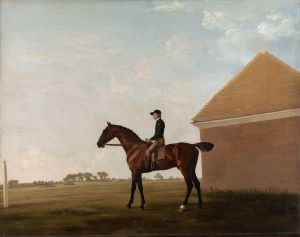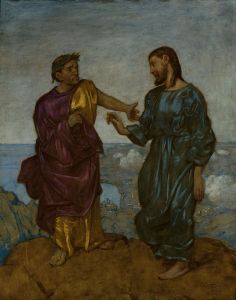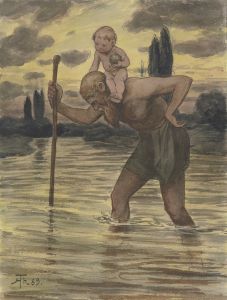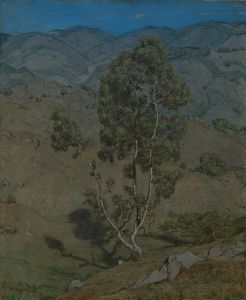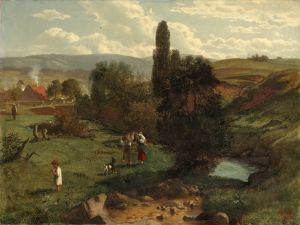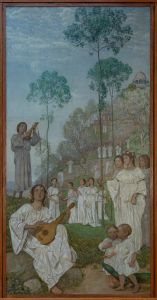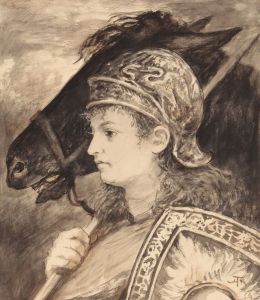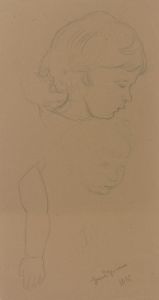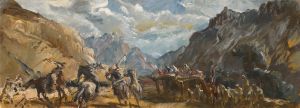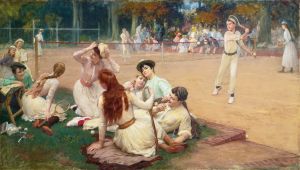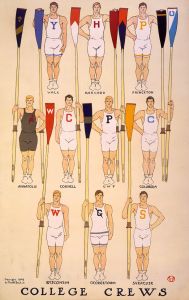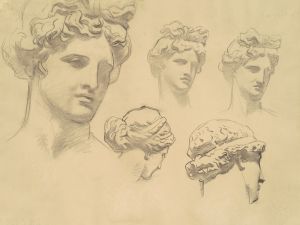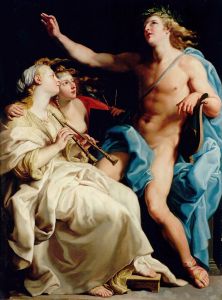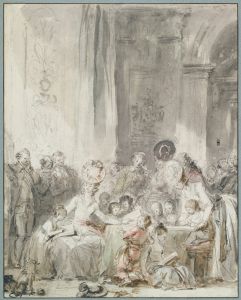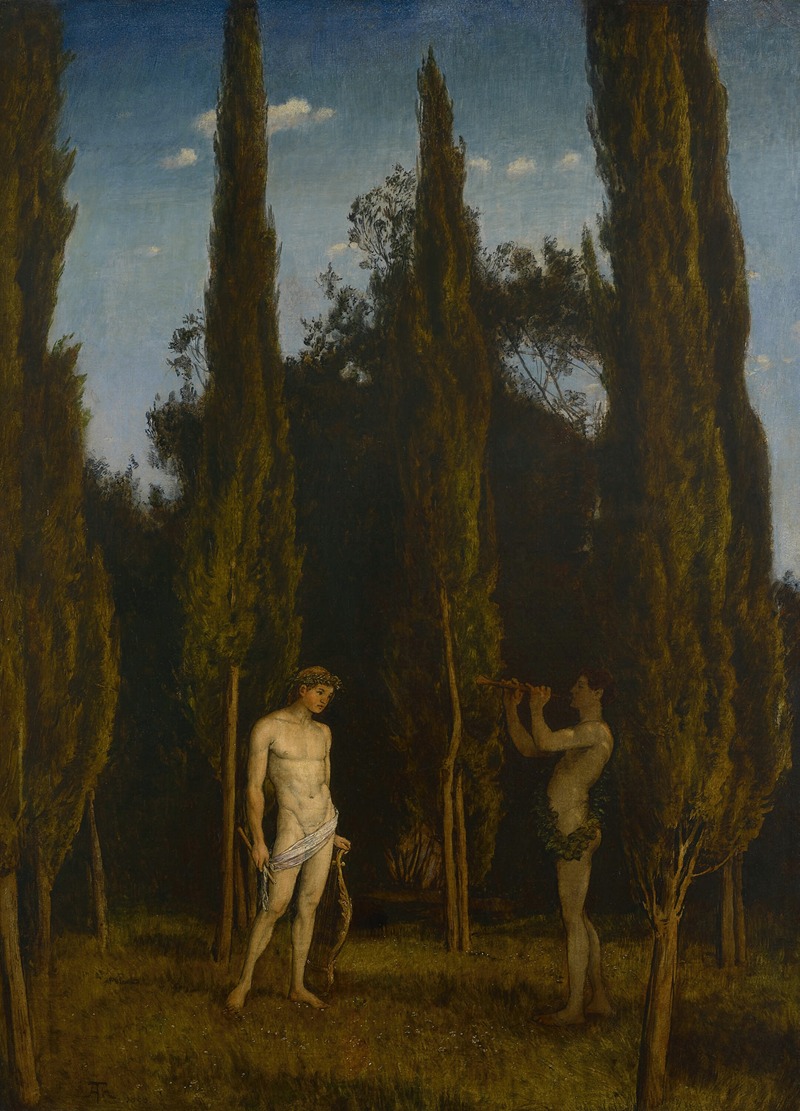
Apollo and Marsyas
A hand-painted replica of Hans Thoma’s masterpiece Apollo and Marsyas, meticulously crafted by professional artists to capture the true essence of the original. Each piece is created with museum-quality canvas and rare mineral pigments, carefully painted by experienced artists with delicate brushstrokes and rich, layered colors to perfectly recreate the texture of the original artwork. Unlike machine-printed reproductions, this hand-painted version brings the painting to life, infused with the artist’s emotions and skill in every stroke. Whether for personal collection or home decoration, it instantly elevates the artistic atmosphere of any space.
Hans Thoma's painting Apollo and Marsyas is a work by the German artist, who was active during the 19th and early 20th centuries. Thoma, known for his landscapes, portraits, and mythological themes, created this piece as part of his exploration of classical mythology. The painting depicts the mythological story of Apollo and Marsyas, a tale from Greek mythology that highlights themes of hubris, divine justice, and artistic competition.
The myth tells of Marsyas, a satyr who found the aulos, a double-piped instrument, discarded by the goddess Athena. Marsyas became skilled at playing the instrument and eventually challenged Apollo, the god of music, to a contest to determine who was the superior musician. In the competition, Apollo played the lyre, an instrument associated with harmony and divine order. The contest ended with Apollo's victory, as he introduced the condition of playing the instrument upside down, a feat Marsyas could not replicate. As punishment for his audacity, Marsyas was flayed alive by Apollo.
Thoma's painting captures the dramatic and moralistic essence of this myth. The composition likely reflects the tension between the mortal and the divine, as well as the consequences of challenging the gods. Thoma's style, influenced by both Romanticism and Realism, often imbued his works with a sense of narrative clarity and emotional resonance. While specific details about the painting's creation, such as its exact date or current location, are not widely documented, it remains an example of Thoma's engagement with mythological subject matter.
Hans Thoma was a prominent figure in German art, particularly associated with the Karlsruhe school. His works often drew inspiration from nature, folklore, and classical mythology, blending these elements into a distinctive visual language. Apollo and Marsyas exemplifies his interest in exploring timeless themes through the lens of mythological storytelling.
Further details about the painting, including its dimensions, medium, and provenance, are not readily available in existing records.





